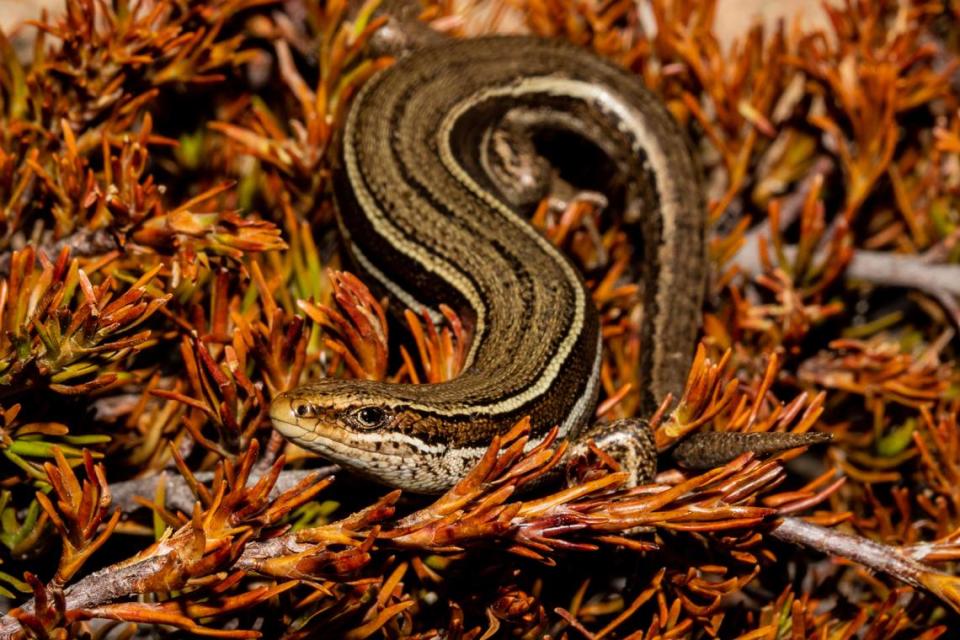‘Erratic’ mountain creature seen leaping across rocks — and discovered as new species
On a mountain in southern New Zealand, an elusive creature basked in the morning sun. As the day warmed up, the yellow-bellied animal took off, quickly leaping across the rocks.
A scientist watched from nearby, fascinated by the “agile” animal. It turned out to be a new species.
Researchers ventured into the mountains on New Zealand’s South Island on a series of wildlife surveys in 2019 and 2020, according to a study published April 16 in the peer-reviewed journal Zootaxa. They were searching for a specific animal: an elusive rock-hopping lizard.
But these lizards proved hard to locate and even more difficult to capture, the study said.
Eventually, the patient researchers managed to observe several of these rock-hopping lizards. They also captured four specimens to measure and photograph before being released.
Looking at their data, researchers quickly realized they’d discovered a new species: Oligosoma eludens, or the rockhopper skink.
Rockhopper skinks are considered “small,” reaching about 5 inches in length, the study said. They have grayish eyes with a transparent window-like opening in their lower eyelids. Their bellies are a “uniform bright yellow” and their backs are brown with a few “smooth-edged” stripes.
Researchers described the new species as being “cryptic, fast moving, and (displaying) erratic emergence.”

Discover more new species
Thousands of new species are found each year. Here are three of our most eye-catching stories from the past week.
→Volcanic ocean creature — with 'long' legs — discovered in Japan. It's a new species
→'Flat'-headed creature — with multicolored eyes — discovered as new species in China
→Nocturnal creature — a 'rapidly-running' predator — discovered as new species in India
Rockhopper skinks typically emerge from hiding “as or just before the morning fog cleared,” the study said. The lizards bask in the sun for about an hour before becoming “increasingly difficult to detect” as the day goes on.
Some skinks were seen “basking in the afternoon sun but would rapidly disappear beneath the rocks whenever a light but cool breeze picked up,” researchers said.
When approached by researchers, the “agile” skinks “would leap between rocks to distance themselves, or disappear beneath the rocks, re-emerging (3 to 6 feet) away within 20–40 seconds,” the study said. “Such rock-hopping behaviour has not been observed in any other New Zealand skink species.”
Researchers said they named the new species after the Latin word “eludens,” meaning “elusive.” The animal’s common name refers to its “habit of hopping between rocks when foraging or disturbed” and was suggested by herpetologist Tony Jewell after he first encountered the species in 2011.
Researchers also found one pregnant rockhopper skink with “two large embryos,” the study said.
So far, the new species has been found on several mountains of New Zealand’s South Island but “is likely to be more widespread.”
The new species was identified by its scale pattern, coloring, body shape, behavior and other subtle physical features, the study said. DNA analysis found the new species had at least 11% genetic divergence from other related skinks.
The research team included Carey Knox, David Chapple and Trent Bell.
7-foot boa constrictor found mating on tree in Brazil — and discovered as new species
Clawed creature falls from tree and lands on scientist in Thailand. It’s a new species
Partly blind creature — with ‘powerful sting’ — found in Colombia. It’s a new species

